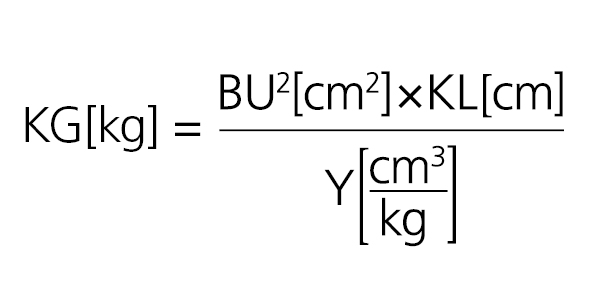Measuring tape instead of a scale – estimating equine body weight using body measurements
Radiographic examinations are an important component of equine medicine and are used not only to assess orthopedic abnormalities of the limbs but also to evaluate clinically healthy horses as part of a veterinary pre-purchase examination.1
To achieve high-quality radiographic images and to avoid motion artifacts, it is recommended to sedate horses prior to the examination. This also helps prevent damage to the sensitive and high-value radiographic equipment. Accurate determination of the animals' weight is necessary for proper drug dosing as well as for adjusting the radiation dose to be used during the examination.
However, in practice, a veterinary scale is not always available. For decades, researchers have therefore explored methods to estimate a horse’s weight as accurately as possible based on its physical characteristics.
Foundations of weight estimation
Millner & Hewitt (1969) laid the groundwork in this field. They measured the body length and chest girth of over 100 horses of different ages and breeds. From these investigations, they were able to derive a general equation for weight estimation.
| KG = Body weight | BU = bust size | KL = Body length |
They determined a value of 6113 for Y. Over the years, various researchers have attempted to refine equine weight estimation based on this formula. The method that is probably the most widely used today was developed by Carroll & Huntington (1988). They studied approximately 300 different horses weighing between 160 kg and 680 kg. Based on their investigations, they calculated a Y-value of 11,877.4. This method showed a strong correlation between the estimated and the actual weight.2
Weight estimation in practice
To determine the values for the formula, you need to measure the horse’s chest girth and body length — from the humeral head to the tuber ischiadicum — using a measuring tape (Fig. 2). These measurements are then inserted into the formula. For a chest girth of 170 cm and a body length of 180 cm, the following calculation is obtained:
KG = (170 cm × 170 cm × 180 cm) / 11,877.4
This results in a body weight of 437 kg.
Conclusion
The calculation formula provides a solid basis for estimating a horse’s weight when weighing on a scale is not possible. However, these results should only be used as guidelines and should not be considered definitive. It should also be noted that the Carroll & Huntington formula is not equally suitable for all horse breeds. While this method showed the best correlation values for (adult) Thoroughbreds, different formulas should be used for ponies or Arabians. In these cases, Martinson et al. achieved the most accurate results.3
Sources
1Hellige M, et al. Interuntersucher-Varianz bei der Beurteilung von Röntgenaufnahmen von Pferden nach dem Röntgenleitfaden 2007. Pferdeheilkunde – Equine Medicine, 34 (2018) 3 (Mai/Juni), 212-222.
2Hois, C. Feldstudie zur Gewichtsentwicklung und Gewichtsschätzung beim wachsenden Pferd. Inaugurale-Disseration, München 2004.
3Górniak, W, et al. Evaluation of the Accuracy of Horse Body Weight Estimation Methods. Animals 2020, 10, 1750.


